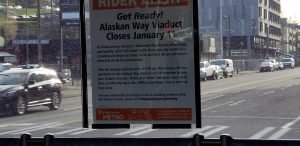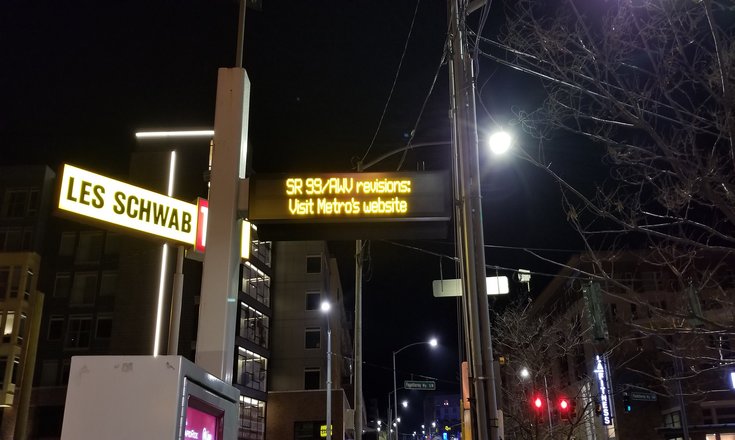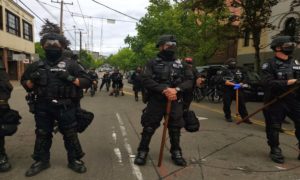You’ve been held hostage by the endless news coverage on #Realign99, the #SeattleSqueeze, and #Viadoom for the past several months. You’ve tried to tune it out. You can’t pick up your phone without seeing #Viadoomsday tips in your newsfeed or turn on your radio without hearing your favorite programming interrupted. But you listened. We all listened. And that was the point.
Commuters haven’t been doing one single thing to help reduce traffic congestion during the SR99 closure, they’ve been doing LOTS of different things.
The first week of the viaduct closure is almost over, and the report card is in. #Viadoom has turned into #ViaNotSoBad. That isn’t thanks to King County Metro or Seattle Department of Transportation, that’s thanks to the close to 700,000 Seattle residents that actually paid attention. Things could be going significantly worse than they are.
Commuters haven’t been doing one single thing to help reduce traffic congestion during the SR99 closure, they’ve been doing LOTS of different things. Some commuters are leaving earlier in the morning, some are taking the bus, some are taking alternate routes, some are telecommuting, some are taking light rail, and some are taking the Water Taxi. This is exciting news because this diversity in the way we are adapting to the change means that Seattleites have taken this seriously and are capable of flexibility during difficult times.

Some students commuting to Seattle Central from Shoreline have reported increased commute times, stating on average an additional thirty minutes has been added to their trip each way. A student from Westwood Village reported an additional forty-five minutes added to her travel time yesterday, however, today’s commute was about fifteen minutes shorter than it was before the doom even started. Another student from Lynnwood said her typical hour-long commute only took thirty-five minutes on Thursday morning. The buses have been overflowing with first-time public transportation users, so it’s even more difficult to get a seat. But each extra person on the bus is one less car on the road.
King County Metro had an additional fifty-five coaches on standby to add to routes as needed on Monday to account for lines at capacity like the Rapid Ride C Line and other routes from the south and west. The Water Taxi is seeing about 2500 riders each day this week, about three times more than this time last year. A driver with Uber reported significantly heavier early morning and early afternoon traffic this week, while a driver from Lyft stated that the traffic is the lightest they’ve ever seen during normal commute hours. Some Seattle Central students are waiting out peak commute times in local restaurants and heading home a little later to miss the big squeeze. Seattle Police Department has been out in mass force pulling over cars that are trying to illegally use the additional BUS ONLY lanes added to the West Seattle Bridge and 4th Ave S off-ramps. It also appears that buses are changing routes in and out of the city dependent on other traffic factors, alternating between the SODO Busway, 2nd Ave S, and E Marginal Way.
On Wednesday at 730 am, a BNSF train caused an unintended forty-five-minute delay, and on Thursday morning an accident on I-5 caused some additional delays. However, this is what we’re used to in Seattle as part of our normal commute. Because people are listening and fewer cars are on the road, it hasn’t been the catastrophe that was expected.
Keep doing what you’re doing.
What does all this mean for the remainder of the #SeattleSqueeze? Please, keep doing what you’re doing. This doesn’t mean that anything was overhyped or catastrophized. It means that Seattelites listened, prepared, and adapted. If we keep up this momentum, we’ll all be able to get through this. Don’t throw in the towel and go back to driving your car or leaving later in the morning again. Keep doing what you’re doing and the #Viadoom will go down in history as a blip we barely remember.
For more commuter resources, please click here.






Comments are closed.